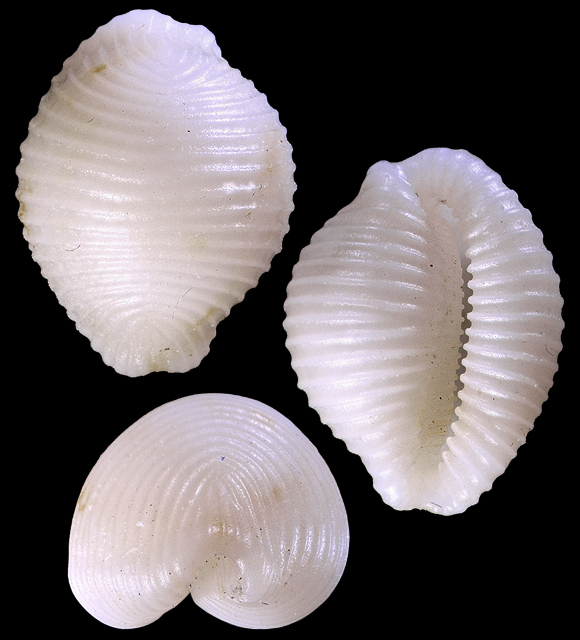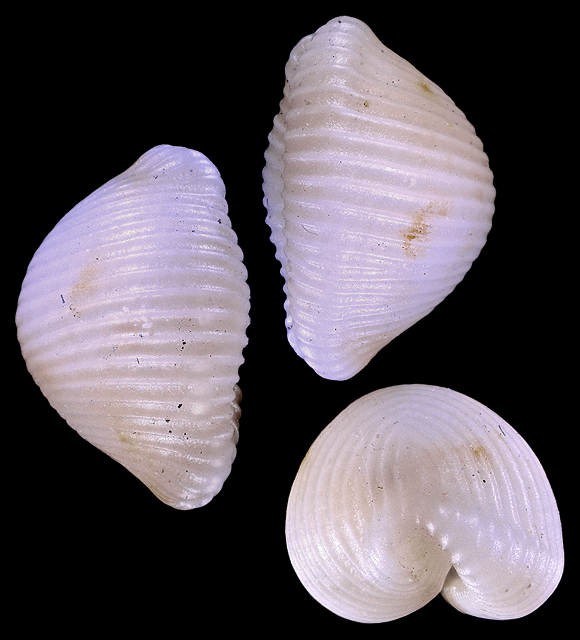
Predator on sessile preys in the infralittoral.
Fehse & Grego proved that Adanson’s “bitou”, rounded, ribbed, white, which actually exists in Sénégal, was described after some South African specimens of an Indo-Pacific species of the genus Trivirostra Jousseaume. Then, they have shown that three white species of Triviidae do occur along the coasts of eastern Atlantic. These three white species differ, inter alia, by the number of their costae. Here is Trivia virginea.
The species « is usually identified as T. candidula (compare synonymy) but differs immediately from the latter by the rather smaller shell (4 to 7mm in virginea vs. 6 to 10mm in candidula), the lesser number of dorsal ribs (16 to 20 in virginea vs. 20 to 24 in candidula) and the lesser number of labral teeth (15 to 19 in virginea vs. 18 to 22 in candidula). The new taxon is distinguishable from T. candidula also by the coarser ribs with greater interstices that are not fused on dorsal summit, the broader columella and fossula as well as the declivous ventral portion. » – Fehse & Grego: “Contributions to the knowledge of the Triviidae. XLI. Cypraea bitou - the answer to the mystery”, Conchylia vol. 51(3-4), january 2021, p. 95-96. Also, it seems that the anterior and posterior terminals are more marked in virginea than in candidula.
The species « is usually identified as T. candidula (compare synonymy) but differs immediately from the latter by the rather smaller shell (4 to 7mm in virginea vs. 6 to 10mm in candidula), the lesser number of dorsal ribs (16 to 20 in virginea vs. 20 to 24 in candidula) and the lesser number of labral teeth (15 to 19 in virginea vs. 18 to 22 in candidula). The new taxon is distinguishable from T. candidula also by the coarser ribs with greater interstices that are not fused on dorsal summit, the broader columella and fossula as well as the declivous ventral portion. » – Fehse & Grego: “Contributions to the knowledge of the Triviidae. XLI. Cypraea bitou - the answer to the mystery”, Conchylia vol. 51(3-4), january 2021, p. 95-96. Also, it seems that the anterior and posterior terminals are more marked in virginea than in candidula.
Above and below: in sand at low tide, Marbella, Málaga, Andalucia, S. Spain. 7,9mm.

The third white atlantic species, Trivia pura, « is distinguished from T. candidula and T. virginea by the close-set ribs, the less prominent dorsal hump, the narrower aperture and in general by the more elegant appearance of the shell. » – op. cit. p. 97. Trivia virginea is more inflated than pura, and bears a lower number of labral denticles and dorsal ribs. Also, Trivia pura has not been found yet in Mediterranean.